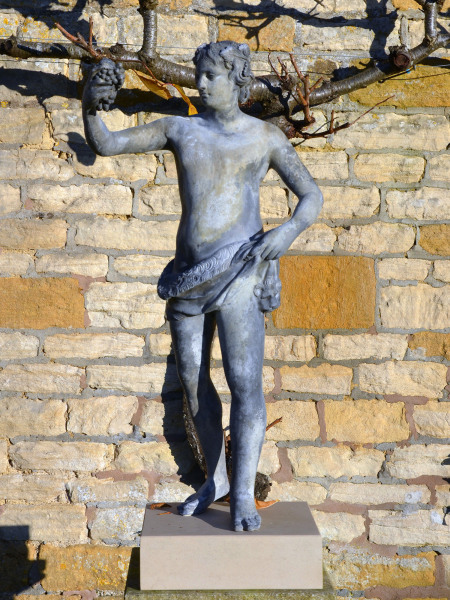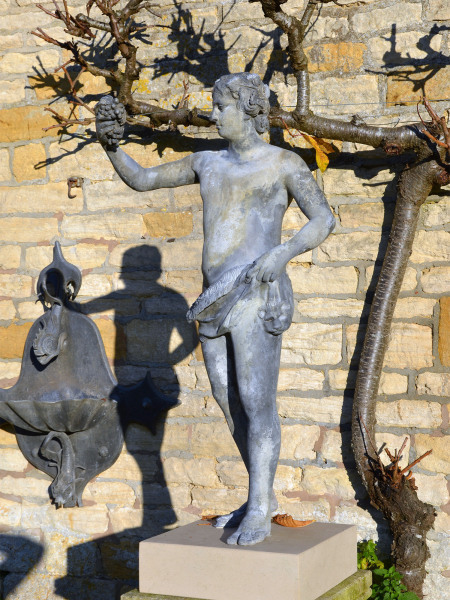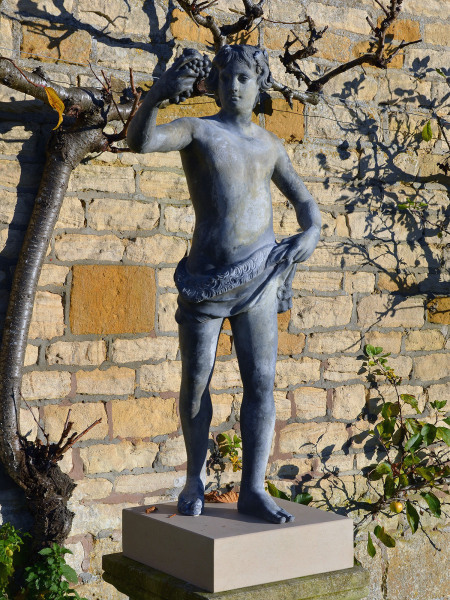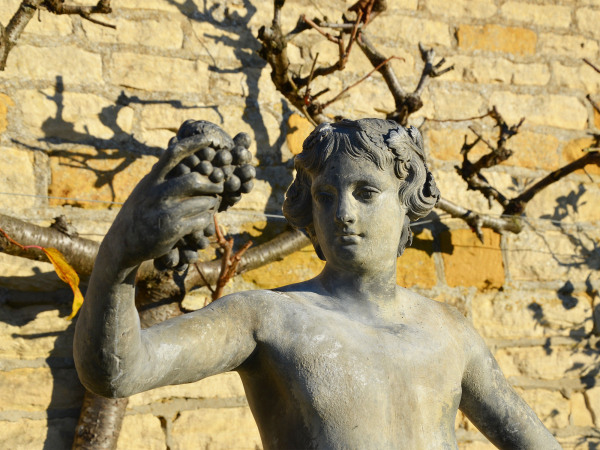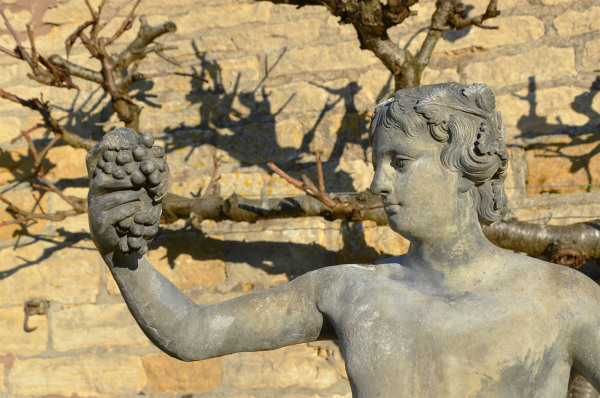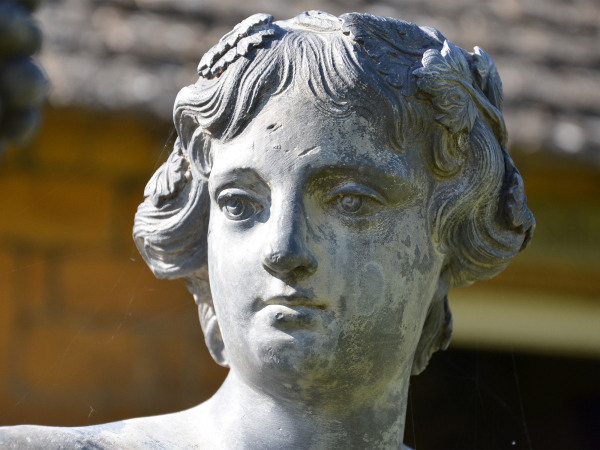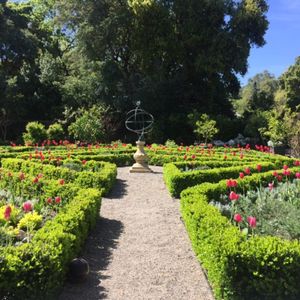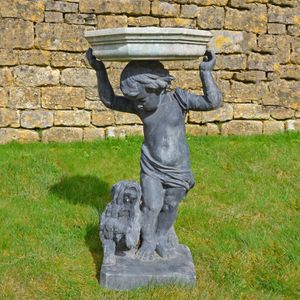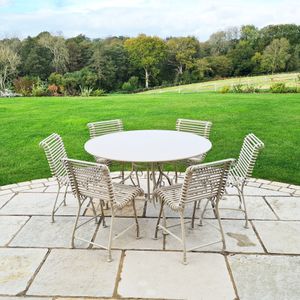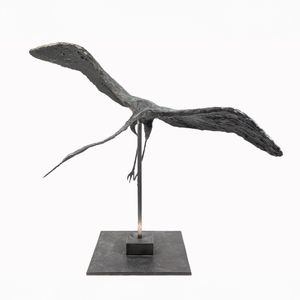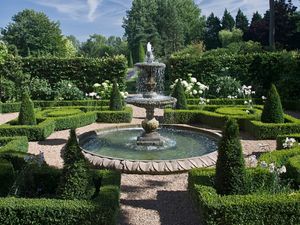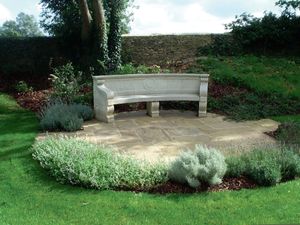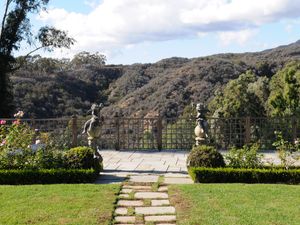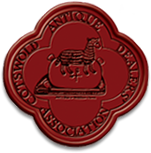An 18th Century Lead figure of Bacchus
An 18th Century Lead figure of Bacchus
Circa 1740
Stock Number: /GSO
Height
107.00cm
[42.13 inches]
Provenance:
Sir Albert Richardson
Robert Kime
Sir Albert Richardson
Robert Kime
Sold
From the workshops of John Cheere 1709–1787.
Bacchus or Dionysus for the Greek – well known as the god of wine and general excess - is shown here holding grapes aloft, his hair entwined with vine leaves and naked bar a loose tunic fashioned from a tiger skin; probably an allusion to his great triumphal caravan drawn variously by tigers and leopards.
Well cast, there is fine detailing to the hair, facial features, grapes and the tiger tunic, with the skin in contrast being smooth. A comparable model can be seen at Hardwick Hall, Derbyshire, England and a similar figure can be seen in the gardens of the Royal Palace at Queluz. These gardens, a mini Versailles, were commissioned by the Portuguese ambassador in London, the Marques de Pombal, for the Infante Dom Pedro. The garden was populated with lead sculptures and fountains from the workshops of John Cheere, and accounted for almost all of his inventory at the time.
It is worth mentioning that as with all period lead figures the iron core used in production often caused damage through rusting to sculptures and so was the case with this figure – it has though been finely conserved with the internal core replaced to preserve the wonderful sculpture for another 250 years – A full condition report is available on request.
John Cheere, known as 'The man at Hyde Park corner' for that is where his, alongside other sculptors' workshops were in London. During the mid 18th century his sales were numerous with commissions for the gardens to the great and the good – examples of which can still be seen in the gardens of Stourhead, Stowe, Kew, Croome Court and Kedleston, to name but a few. With the subjects various though mainly figures, usually painted and sometimes guilded to order, the production yard was in fact a bit of a tourist attraction. An Irish clergyman visiting in 1761 was ‘introduced to an Assembly of Gods and Goddesses, Juno, Minerva, Venus de Medici, Jupiter, Mars, Neptune and many Rural Deities Pan & Frisking Satyrs with an infinite multitude of Meer Dancers, Haymakers, Gladiators, Wrestlers, Huntsman & Fowlers, also Eagles, Vultures, Hawks, Kites, Ostrich, Peacocks, Lions, Leopards, Tigers’ – an engraving by Hogarth 'The Analsis of Beauty' shows a sculpture yard that looks very similar to the wonderful description above.
Bacchus or Dionysus for the Greek – well known as the god of wine and general excess - is shown here holding grapes aloft, his hair entwined with vine leaves and naked bar a loose tunic fashioned from a tiger skin; probably an allusion to his great triumphal caravan drawn variously by tigers and leopards.
Well cast, there is fine detailing to the hair, facial features, grapes and the tiger tunic, with the skin in contrast being smooth. A comparable model can be seen at Hardwick Hall, Derbyshire, England and a similar figure can be seen in the gardens of the Royal Palace at Queluz. These gardens, a mini Versailles, were commissioned by the Portuguese ambassador in London, the Marques de Pombal, for the Infante Dom Pedro. The garden was populated with lead sculptures and fountains from the workshops of John Cheere, and accounted for almost all of his inventory at the time.
It is worth mentioning that as with all period lead figures the iron core used in production often caused damage through rusting to sculptures and so was the case with this figure – it has though been finely conserved with the internal core replaced to preserve the wonderful sculpture for another 250 years – A full condition report is available on request.
John Cheere, known as 'The man at Hyde Park corner' for that is where his, alongside other sculptors' workshops were in London. During the mid 18th century his sales were numerous with commissions for the gardens to the great and the good – examples of which can still be seen in the gardens of Stourhead, Stowe, Kew, Croome Court and Kedleston, to name but a few. With the subjects various though mainly figures, usually painted and sometimes guilded to order, the production yard was in fact a bit of a tourist attraction. An Irish clergyman visiting in 1761 was ‘introduced to an Assembly of Gods and Goddesses, Juno, Minerva, Venus de Medici, Jupiter, Mars, Neptune and many Rural Deities Pan & Frisking Satyrs with an infinite multitude of Meer Dancers, Haymakers, Gladiators, Wrestlers, Huntsman & Fowlers, also Eagles, Vultures, Hawks, Kites, Ostrich, Peacocks, Lions, Leopards, Tigers’ – an engraving by Hogarth 'The Analsis of Beauty' shows a sculpture yard that looks very similar to the wonderful description above.




